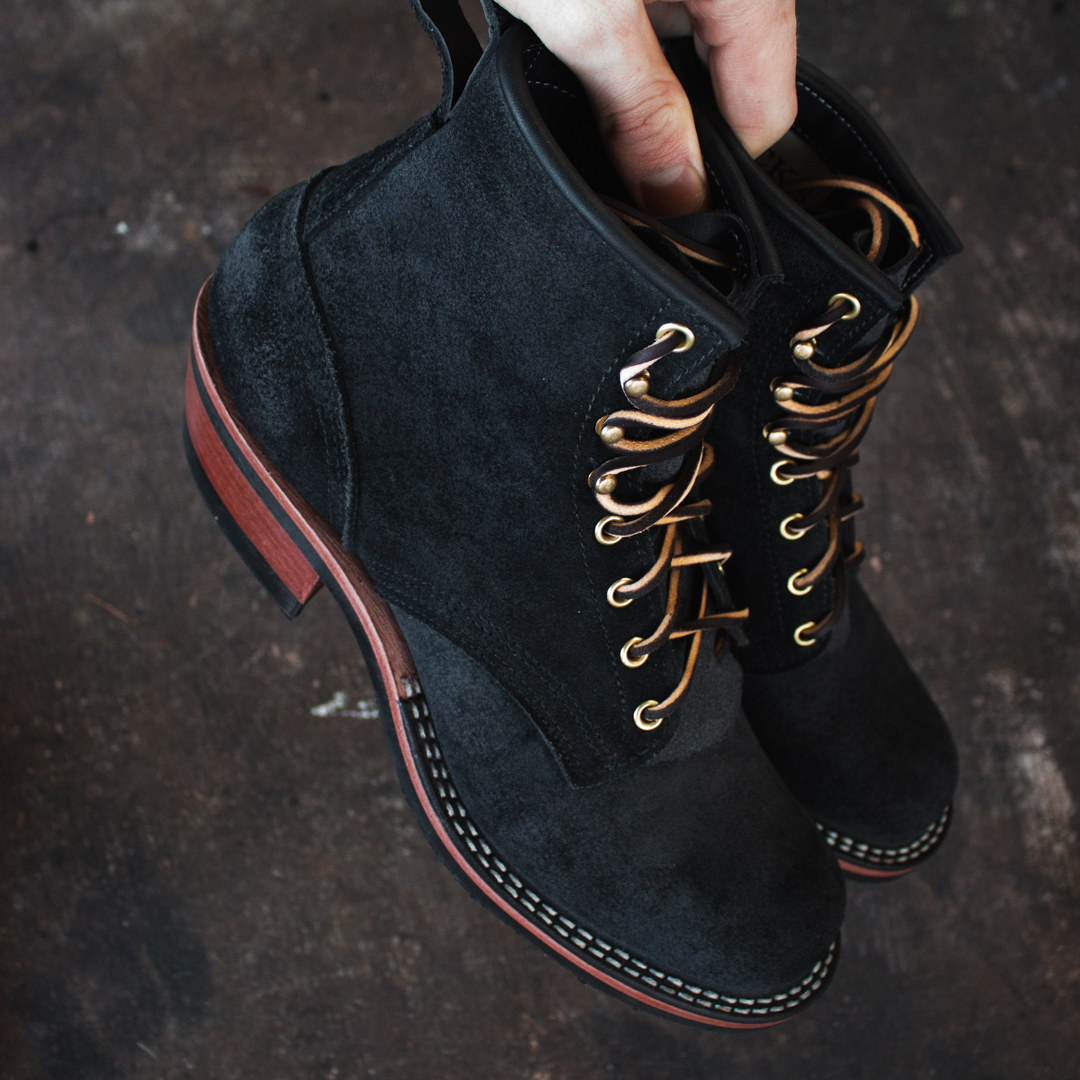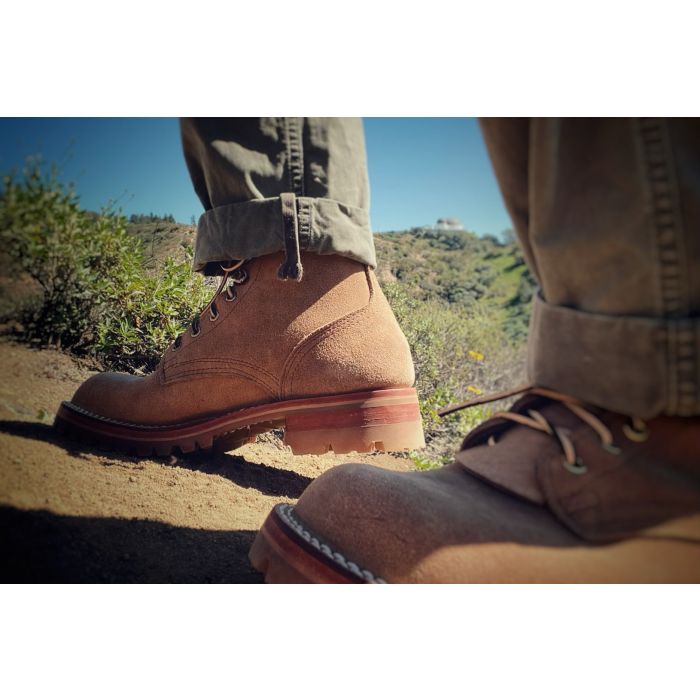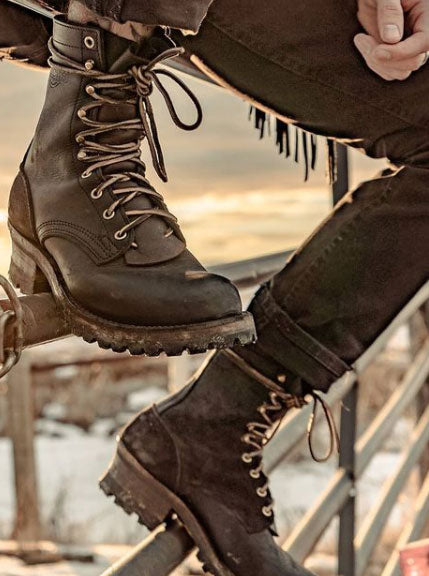0-
If you've looked at our different boot models, you've probably noticed some boots are made in roughout leather - if you don't know what it is, it looks a little fuzzy - or smooth. Some even have both.
Is there a difference? Which should you get on your work boots?
It depends on what you want in your work boots. Roughout leather is literally the same leather as smooth, so you aren't losing a thing by having a boot made entirely or in part with roughout. So what's the difference between roughout and smooth leather and why does it matter?
What Is Roughout Leather?
Roughout leather is literally the same as smooth leather. It just hasn't been split and is turned fluffy side out.
Leather is made from the skin of cows, as everyone knows. Just like human skin, there are several layers of skin and other tissues between the top layer of skin and the muscles beneath it.
Without getting into all the ins and outs of cow skin anatomy, basically there are three main layers of cow skin. There's the grain - the hard outer layer - the junction, and then the corium, which is a soft, fatty layer of tissue between the skin and the muscles.
Full-grain leather is the grain and the junction, with a hard outer layer on one side and the fleshy junction on the other. Some full grain leather is split, removing the junction from the hide and leaving only the hard grain, and some is not.
Roughout leather leaves the fleshy junction intact, and goes through the entire tanning, coloring and finishing process. If a leather goods maker, be it furniture, or wallets or leather boots wants to make the product "rough out" they just put the rough side out rather than the smooth side.
That's what roughout leather is. It's grain leather, just like smooth leather; it's just turned around the other way and the fluffy side is on the outside of the boot.
So...why is roughout leather used to make boots?

Roughout Leather Is Easy To Care For, So It's Perfect For Work Boots
The reason roughout leather is a popular choice for work boots - both for bootmakers and their customers - is that it's a hardy material that's easy to care for.
A pair of leather dress shoes in shell cordovan or a similar leather take some commitment to keep in their best shape. You have to polish and polish and polish and polish them some more to get that high mirror shine...and then do everything you can to keep them that way.
That's great if you wear a suit to work and drive a desk, but that is just not practical for boots that are going to be in the mud, the dirt or even worse all day every day.
Roughout leather doesn't need anywhere near that level of care. All you really need to do is clean it with some saddle soap, apply some boot oil to condition it, and then rub in some leather grease to keep it water resistant and protected from the elements.
That's about it; keep up with that maintenance regimen every few weeks and roughout boots will last a lifetime...with a few resoles along the way.
It's not that smooth leather on work boots requires that much more fettling with. In fact, all you need to do is usually the exact same things. However, smooth leather is more susceptible to dings, nicks and scratches that are very obvious.

Roughout Leather Vs Smooth For Work Boots
As far as our work boots are concerned, we only use the highest-quality leather. We don't cut corners, we don't compromise, we don't do anything that takes away from the quality of our boots in terms of construction or materials.
We can't speak for anyone else's products except our own in this regard: the roughout leather on our boots is the exact same leather you're getting if you order smooth. The quality, the durability will all be there.
With other boot companies...that might not be the case.
Roughout makes the boot rugged, supportive, comfortable and easier to care for. However, some people prefer the appearance of smooth, which is why one of the most popular boot configurations is a roughout toe box and heel, with a smooth upper.
Either way, you're getting the best pair of boots we can possibly make.





































